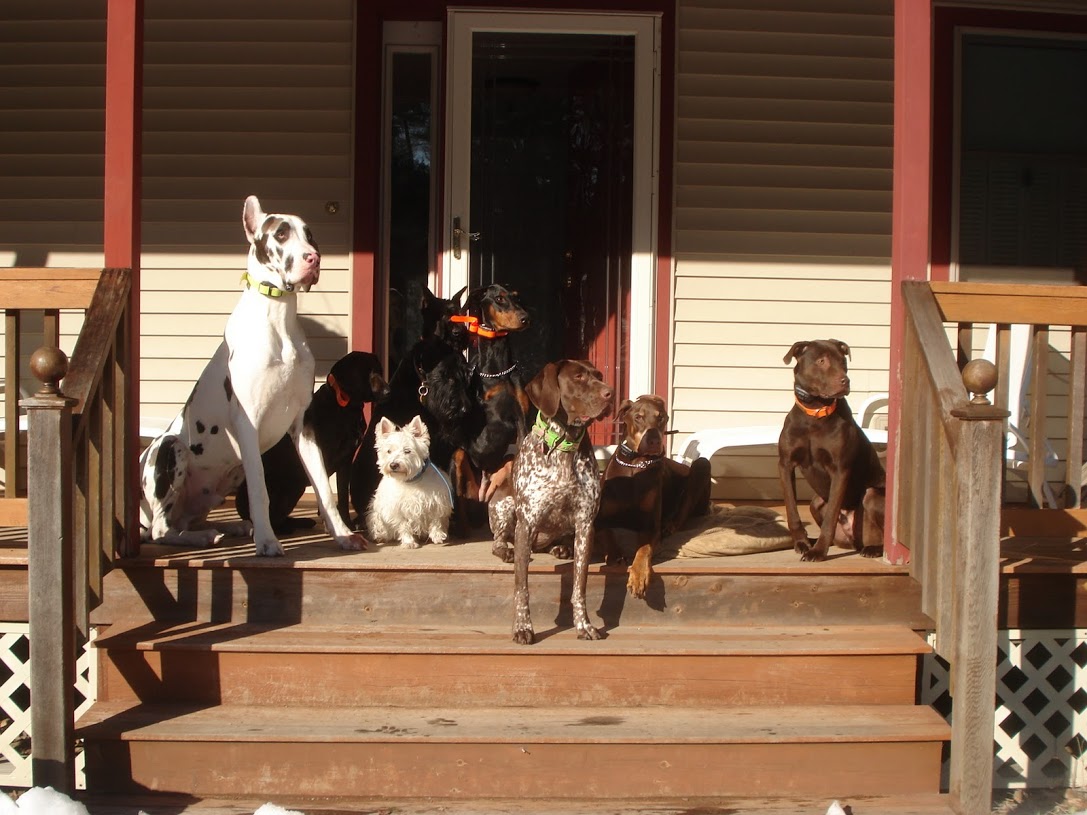
As humans we take this for granted for ourselves, but if you think about it, our every day patterns and structure lend to the feeling of safety and security for human children and adults alike. Of course we can talk to each other should an unanticipated event comes up. Can you imagine how scary some events are to dogs who do not have that sort of heads up? We can make everything smooth sailing (or smoother sailing anyway) by adding a little pattern and structure to certain parts of our canine's day.
The pattern or routine here begins with a very early outing (5 am usually to start) with at least five minutes out. During that time, I do not play with the puppy once they are out unless they do both a poop and a pee. I will congratulate the puppy on each individually, of course (when outside). Early in the morning and after they eat, I generally expect both a poop and pee. So if those don't occur, they go back in the crate and I go and get them back out after 15 minutes or so. If then, they still don't produce, I might take them for a light walk and then repeat if there is still no production. The thing with very young puppies is they are so distracted by everything around them, they don't realize they need to go sometimes. All this routine and pattern is structured for them to begin to realize the purpose of potty break outings. It works very well, and then you have a puppy on the right track as far as house breaking goes.
Not all of us are lucky enough (or want to) have structure to our lives with patterns for every second of every day. However, have predictable routines does help the anxious and fearful dog begin to feel more safe and trust that you have things under control. If you want to train a dog to behave well at the door (or stay away from the door), you start to build structure around how that routine will go. First I usually build up a stay for my dog. If my dog can come to me to the door, sometimes this can just be a stay on leash. If I prefer that my dog hangs back while I go to the door, I can advance the commands stay (sit or down until I release) or place (stay on an object until I come back). Then I start proofing the commands with me coming in and out of the doors (depending on where the stay is, you could have a helper or a back tie situation). Then we practice the routine with people they know. If we can, we then practice the routine with people they are somewhat familiar with but maybe don't really know on a day to day basis. Then we, finally, add it to everyday scenarios where it might be the UPS guy or the FedEx guy that we are opening the door to. So the steps would go something like:
- [Dog's name] "place" command
- Walk to door "who is it" (note if I don't know who it is, this might be step 1 and step 1 might be step 2 to allow my dog to alert at them, while I find out who they are)
- Open the door with my side eye on the dog, if they get up, I will close the door and start again (family and friends will know of this routine). If they remain, say "good girl or boy" and let them in. (if I did not expect them to release and it is a stranger, I would probably back tie them).
- If the dog is generally pretty social, I will release them from their place in a few if they look calm.
- Going to the vet's office: For instance, (once this pandemic is over) making visits or stopping by the vets on non visit days once a week or twice a month. So they begin to expect everyone is friendly at the vets and there is nothing to worry about usually.
- Crate training: Providing food, water, and comfortable bedding in the crate begins to make a pattern for the dog of going into the crate for good things.
- Going out the door before a walk: You can create an environment and expectation that you never go through the door with a dog in the state of excitement.
- Greeting humans and other dogs when out and about: Have a series of steps and commands you give before stopping to talk to human friends or human friends with canines.
- Feeding time: Make sure you have steps in place so you are feeding a calm dog or pack of dogs.
- Introduction of rewards: You can use your hands in such a predictable way as to give the reward without your dog getting to excited and biting your fingers. Examples of this are having a closed fist around the food reward first. Also if using a toy, be sure they are rewarded and encouraged when they get the correct targeted area of the toy.
 RSS Feed
RSS Feed